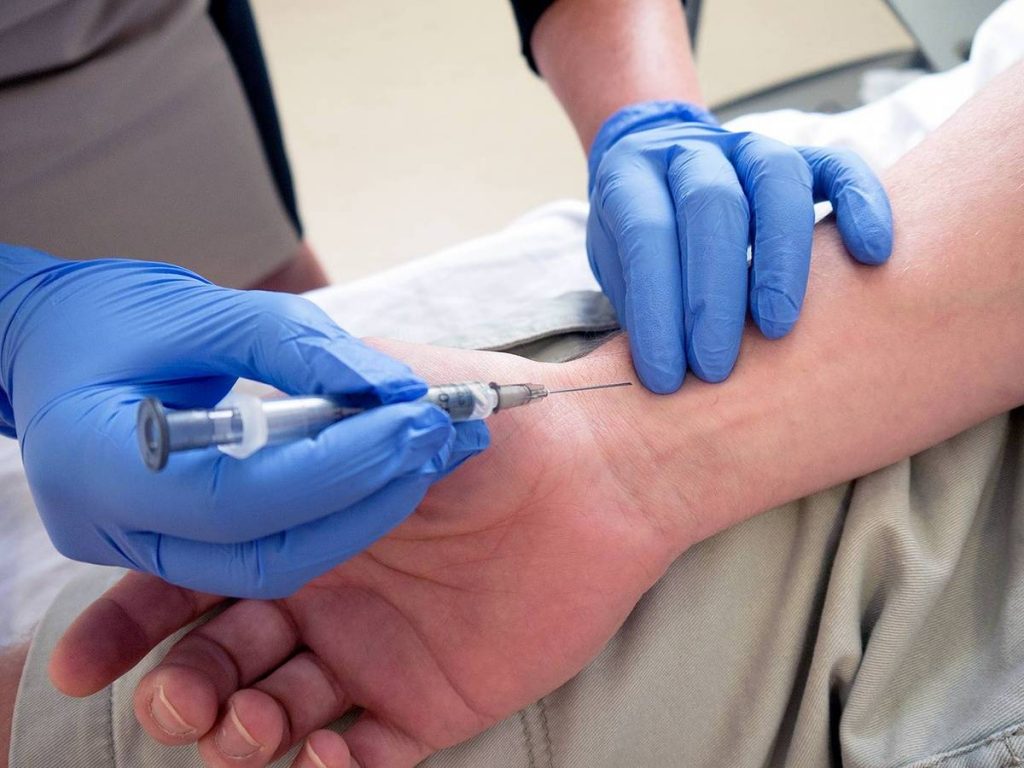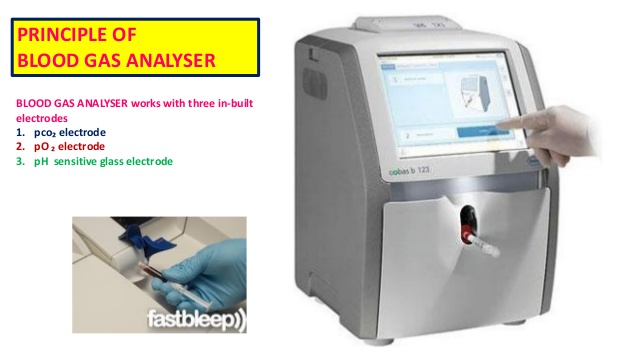Arterial Blood Gas Determination
Published .

Like spirometry, EMS generally does not perform ABG collection or analysis. The following information is more hypothetical and intended to demonstrate the connection between a patient and a disorder.
Blood gas analysis is a commonly used diagnostic tool to evaluate the partial pressures of gas in blood as well as acid-base content. Understanding and use of blood gas analysis enables providers to interpret respiratory, circulatory and metabolic disorders.
A “blood gas analysis” can be performed on blood obtained from anywhere in the circulatory system (artery, vein, or capillary). An arterial blood gas (ABG) specifically tests blood taken from an artery. Arterial blood gas analysis assesses a patient’s partial pressure of oxygen (PaO2), providing information on the oxygenation status; the partial pressure of carbon dioxide (PaCO2), providing information on the ventilation status (chronic or acute respiratory failure, and is changed by hyperventilation (rapid or deep breathing) and hypoventilation (slow or shallow breathing); and acid-base status. Although oxygenation and ventilation can be assessed non-invasively via pulse oximetry and end-tidal carbon dioxide monitoring, respectively, blood gas analysis is the standard.
Arterial blood gases are frequently ordered by emergency medicine, intensivist, anesthesiology and pulmonology physicians, but may also be needed in other clinical settings. There are many diseases that are evaluated using an ABG which include acute respiratory distress syndrome (ARDS), severe sepsis, septic shock, hypovolemic shock, diabetic ketoacidosis, renal tubular acidosis, acute respiratory failure, heart failure, cardiac arrest, asthma and inborn errors of metabolism.

Whole blood is the required specimen for an arterial blood gas sample. The specimen is obtained through an arterial puncture or acquired from an indwelling arterial catheter. Once obtained, the arterial blood sample should be placed on ice and analyzed as soon as possible to reduce the possibility of erroneous results. Automated blood gas analyzers are commonly used to analyze blood gas samples, and results are obtained within 10-15 minutes. Automated blood gas analyzers, directly and indirectly, measure certain components of the arterial blood gas sample .
- pH = measured acid-base balance of the blood
- PaO2 = measured the partial pressure of oxygen in arterial blood
- PaCO2 = measured the partial pressure of carbon dioxide in arterial blood
- HCO3 = calculated concentration of bicarbonate in arterial blood
- Base excess/deficit = calculated relative excess or deficit of base in arterial blood
- SaO2 = calculated arterial oxygen saturation unless a co-oximetry is obtained, in which case it is measured
- pH (7.35-7.45)
- PaO2 (75-100 mmHg)
- PaCO2 (35-45 mmHg)
- HCO3 (22-26 meq/L)
- Base excess/deficit (-4 to +2)
- SaO2 (95-100%)
Arterial blood gas interpretation is best approached systematically. Interpretation leads to an understanding of the degree or severity of abnormalities, whether the abnormalities are acute or chronic, and if the primary disorder is metabolic or respiratory in origin. This method assists with determining the presence of an acid-base disorder, its primary cause, and whether compensation is present.
Easy Analysis Method: Rule In/Out Respiratory Cause
Carbon dioxide (CO2) is a waste product of aerobic metabolism. CO2 is very soluable (able to be dissolved) in water. When CO2 binds with water, the following reaction can happen:
CO2 + H2O ↔ H2CO3
Water and carbon dioxide mixing together to become an acid. But not just any acid, a volatile acid (an acid that can be broken back into CO2 and H2O). The acid is carbonic acid.
What would happen if there was a build up of CO2 in the body? Considering there is an infinite supply of water in the human body (from the viewpoint of a CO2 ion).
⬆ CO2 + H2O ↔ ⬆ H2CO3
What happens when there is a buildup of carbonic acid in the body? It drops the pH (which as you know by now is a reverse representation of compounds with lots of hydrogen ions commonly called acids). The more acid, the lower the pH.
⬆ H2CO3 = ⬇pH
What would a lower pH do to cells? The acidity of their environment would destabilize cell membranes and kill cells, tissue, and left unchecked organs.
CO2 binds with water and creates carbonic acid. Too much carbonic acid will drop the pH of the body. This is the basis for respiratory acidosis. An arterial blood gas analyzer would be able to calculate the pH and the CO2 level.
| Measurement | Normal Value |
| CO2 | 35 – 45 mmHg |
| pH | 7.35 – 7.45 |
Respiratory Acidosis
The blood gas analyzer prints the data onto a piece of paper. The respiratory therapist now needs to determine if there is a derangement in the blood gas values. The first thing to do is determine if the pH is acidotic (pH lower than 7.35), alkalotic (pH greater than 7.45), or within normal limits. The respiratory therapist will look at all of the lab values printed on the paper to determine the cause of the aberrant pH. The first thing the respiratory therapist will look at is the CO2.
CO2 is the waste product of aerobic metabolism. It also binds with water to create carbonic acid.
⬆ CO2 + H2O ↔ ⬆ H2CO3
Respiratory Acidosis is what happens when the patient is not eliminating the CO2 efficiently and it binds with the abundant water in his/her body. The relationship is a pH lower than 35 and CO2 is greater than 45.
pH 7.30 CO2 60 = Respiratory Acidosis
So what would happen if the pH was low and the CO2 is less than 45? Obviously, the patient is acidotic, but not from respiratory causes. There are only 2 causes of an acid base derangement, respiratory or metabolic.
pH 7.30 CO2 35 = Metabolic Acidosis (why? because it is not respiratory)
Metabolic Acidosis
Easy to see, because the patient is experiencing acidosis and the CO2 is less than 45. What causes metabolic acidosis?
- Lactic acidosis
- Ketoacidosis (e.g., Alcoholic, diabetic, or starvation)
- Chronic kidney failure
- Transient 5-oxoprolinemia due to long-term ingestion of high-doses of acetaminophen (often seen with sepsis, liver failure, kidney failure, or malnutrition)
- Salicylates, methanol, ethylene glycol
- Organic acids, paraldehyde, ethanol, formaldehyde
- Carbon monoxide, cyanide, ibuprofen, metformin
- Propylene glycol (metabolized to L and D-lactate and is often found in infusions for certain intravenous medications used in the intensive care unit)
- Massive rhabdomyolysis
- Isoniazid, iron, phenelzine, tranylcypromine, valproic acid, verapamil
- Topiramate
- Sulfates
